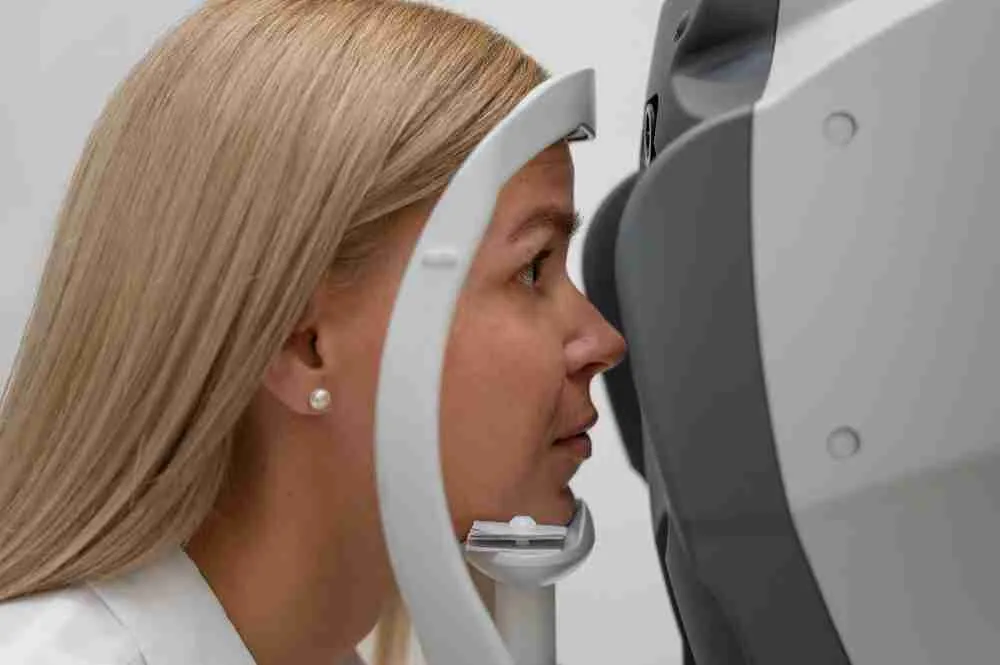Ever squinted at a streetlight and seen a weird halo? Or struggled with words going blurry while reading? You’re not alone. A ton of people wrestle with poor vision, but many don’t even know what’s messing with their eyesight. That’s where the whole stigmatism vs astigmatism confusion kicks in.
You might’ve seen these two tossed around like they’re twins. But are they? Not quite. And if you’ve been wondering whether stigmatism is even real or just a made-up word, well... hang tight. This post lays it all out.
What Is Astigmatism?
Let’s not sugarcoat it. Astigmatism is annoying. It’s one of the most common eye conditions affecting how your eye bends light, medically called a refractive error. Instead of focusing light directly onto your retina, an eye with astigmatism bends it unevenly. Why? Because the cornea or lens isn't shaped like a basketball, it’s shaped more like a football.
This causes eye problems like blurry vision, especially at night or at certain angles. Astigmatism symptoms range from mild fuzziness to light streaks and ghosting, especially around bright lights.
What Is Stigmatism?
Okay, time to clear the air: Is stigmatism a real condition? Technically… no. “Stigmatism” isn't a medical diagnosis. It’s more of a misused word. Often, people mean astigmatism when they say it. That said, some folks use the stigmatism definition in casual language to talk about normal or even ideal vision, where there’s no distortion.
Others refer to stigmatism as an eye condition as a general term for eye issues, which is not accurate, but it happens. This fuzziness (pun intended) is a big reason why the difference between stigmatism and astigmatism needs clearing up. Badly.
Stigmatism vs Astigmatism: The Key Differences
Here’s where it gets interesting. People think these two are interchangeable. They’re not. So let’s break it down with less noise and more clarity. First, yes, they both involve vision issues. Yes, they both sound similar. But one is a real diagnosis, and the other is, well… not.
|
Feature |
Astigmatism |
Stigmatism |
|
Medical term? |
Yes |
No (commonly misused) |
|
Cause |
Irregular curvature of the cornea/lens |
N/A, Not medically defined |
|
Diagnosis method |
Eye exam, keratometry, topography |
None, not a clinical diagnosis |
|
Symptoms |
Blurry, distorted vision, eye strain |
Vaguely used to describe vision issues |
|
Treatment available? |
Yes (glasses, contacts, LASIK) |
No specific treatment |
So, what is the difference between stigmatism and astigmatism? Simple. Astigmatism = real, diagnosable condition. Stigmatism = misunderstood term people throw around when they mean astigmatism.
Why the Confusion Exists
Honestly, blame the way it sounds. Stigmatism rolls off the tongue easily. It feels like a legit medical term. And, people hear it in conversations, assume it’s interchangeable with astigmatism, and… boom, decades of confusion.
Also:
-
Language habits: Just like how people say “cold in the bones” instead of arthritis, stigmatism becomes the go-to term for any eye blur.
-
Autocorrect fails: Yep, your phone might swap astigmatism with stigmatism. Happens more than you'd think.
-
Pop culture: TV shows and movies mess up medical jargon all the time.
-
Lack of eye checkups: Most people don’t visit the eye doc unless they see double. So, they keep repeating what they hear.
This confusion even shows up in search results, Reddit threads, TikToks, memes, and everyone’s debating it. But here’s the deal: If you're using “stigmatism” to describe your eye problems or blurry vision, chances are you’re really talking about astigmatism.
How to Know If You Have Astigmatism
So you’re squinting a lot. Words blur, headaches creep in after screen time. But is it astigmatism or just tired eyes?
Astigmatism isn’t rare. Research shows it affects anywhere from 8% to 62% of adults globally, depending on where they live and how old they are. That’s a pretty wide range, but even the average slice means millions of people walk around with bent light and blurry lines.
Start with symptoms:
-
Vision that blurs both near and far
-
Trouble seeing at night
-
Squinting to focus
-
Eye discomfort or burning after reading or using screens
-
Seeing halos or streaks around lights
-
Constant eye strain or tension headaches
Diagnosis usually involves a few tests:
1. Visual Acuity Test
You read letters on a chart from 20 feet away. If those letters seem to dance? Yep, possible astigmatism.
2. Refraction Test
This one uses a phoropter (that big machine with spinning lenses). It figures out what lens gives you the sharpest vision.
3. Keratometry
This test maps out the curve of your cornea. Think of it like topography, but for your eye.
The bottom line? If you suspect astigmatism, don’t guess. Get your eyes checked. Especially if your astigmatism symptoms interfere with daily stuff, like night driving or reading.
Treatment Options for Astigmatism
Look, no one wants fuzzy vision or daily eye pain. The good news? There are solid ways to manage astigmatism. No gimmicks. Just real options.
1. Eyeglasses & Contact Lenses
Let’s start basic. These are your go-to fix.
-
Glasses: Custom-made lenses correct light refraction. Simple.
-
Toric contact lenses: These are specially shaped to fit the unique curve of an astigmatic eye.
-
Rigid gas permeable lenses: Work well for more severe or irregular astigmatism. Sharper focus, but less comfy.
2. Laser Surgery (LASIK or PRK)
Want long-term results?
-
LASIK reshapes the cornea using a precise laser. Popular for mild to moderate cases.
-
PRK removes the outer layer of the cornea before reshaping. Ideal if you have dry eyes or thin corneas.
Both options take under 30 minutes. Recovery varies. Some see clearly the next day. Others need a week. Follow-up matters, though, don’t skip them.
3. Orthokeratology (Ortho-K)
Not into surgery? Here’s a workaround.
-
Ortho-K lenses are rigid contacts you wear overnight. They gently reshape your cornea while you sleep.
-
Remove them in the morning. Enjoy clear vision all day.
But results are temporary. Stop wearing the lenses, and your cornea will go back to its old shape. Still, it's a good option if you're under 18 or not a fan of surgery.
Final Thoughts
So, stigmatism vs astigmatism, not twins. Not even siblings. Just one real condition (astigmatism) and one mix-up (stigmatism) that needs retiring. If you're squinting, struggling with focus, or dealing with headaches, don’t wait.
Get tested. Explore your options. Vision isn’t something to ignore or confuse. And now that you know the real difference between stigmatism and astigmatism, you can skip the myths and actually fix what’s wrong.
Frequently Asked Questions
Is stigmatism a real condition in eye care?
No, stigmatism isn’t a medically recognized condition. People often say it when they mean astigmatism, which is a diagnosable refractive error.
Can children have astigmatism from birth?
Yes, many children are born with astigmatism. It’s often genetic and might go unnoticed until school years if vision tests aren’t done early.
Are both eyes always affected by astigmatism?
Not necessarily. You can have astigmatism in one eye or both. Severity might differ, too. That’s why tailored prescriptions matter.
Can astigmatism worsen over time?
Sometimes. Especially if left untreated or due to eye injuries. Regular checkups help catch changes before symptoms get worse.
Does astigmatism cause night driving issues?
Yes. People with astigmatism often struggle with night vision, halos around headlights, glare, and poor depth perception, which can all be signs.

Reviewed by







